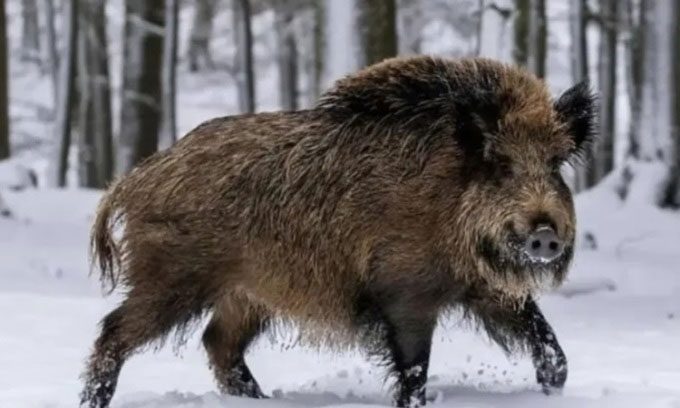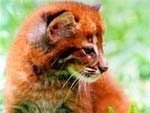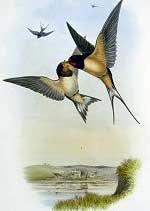New research by scientists indicates that wild super pigs in Canada are likely to invade South Dakota, North Dakota, Montana, and Minnesota, causing billions of dollars in damage.
Wild super pigs from Canada could cross the border and invade the northern United States, according to a study published in the journal Biological Invasions. Wild pigs are a hybrid population consisting of domestic pigs (Sus scrofa domesticus), wild boars (Sus scrofa), which were introduced to Canada in the late 1980s for meat production and recreational hunting, along with hybrids of the two species, as noted by the Invasive Species Council of Canada. Farmers released wild boars and some domestic pigs when the pork market declined in the early 2000s, believing they could not survive the harsh winters on the Canadian prairies with heavy snowfall. Contrary to this belief, the pigs thrived.

Canadian wild super pigs are highly resilient to cold. (Photo: Houston Herald).
According to Ryan Brook, a professor specializing in meat science and poultry at the University of Saskatchewan, Canada, wild pigs have a high reproductive rate, are highly mobile, and can spread easily. They are also well-adapted to cold climates, leading Brook and his colleagues to nickname them “super pigs.” These super pigs could cross the border into North Dakota, South Dakota, Montana, and Minnesota. While southern United States has around 6.9 million wild pigs, much of the north is devoid of them, in part due to control efforts.
However, authorities’ efforts may not be sufficient to prevent invasive pigs from the north, posing significant threats to agriculture and ecosystems. “Wild pigs root and dig up the ground. They are an ecological disaster. They consume anything from small mammals like mice to ducks and geese, and even mature white-tailed deer can be killed and eaten by them,” Brook stated.
To map the expansion of wild pigs across Canada and identify where they might spread next, Brook and his team fitted GPS collars on 22 wild pigs. The collars transmitted their locations every three hours over a 13-month period. Some collars malfunctioned or were lost, so the authorities only collected data from 10 pigs. They then cross-referenced the location data with habitat types and created models to simulate the movements of these pigs. The research team expressed concerns that wild pigs are likely to cross the Canada-U.S. border and establish populations in the northern United States.
The preferred habitats of wild pigs include wetlands, deciduous forests, and agricultural fields that provide both food and shelter. This type of habitat is widespread across the northern prairies and along the border. Researchers found that this expansion is likely to occur near water sources, including Fort Peck Lake in Montana, Devils Lake in North Dakota, and the Missouri River.
“Our results indicate the rapid and uncontrolled potential spread of wild pigs in the northern North American prairies. To mitigate the risk, Brook’s team suggests planting low crops that provide little cover or preventing wild pigs from accessing their preferred habitats. This can be achieved by erecting fences or setting traps. Some wild pig populations in Manitoba, Canada, are only 2 to 3 days of travel away from the U.S. border.”





















































